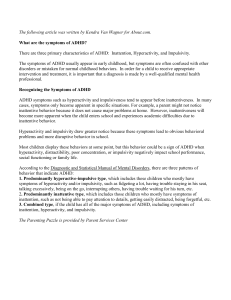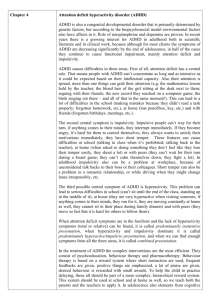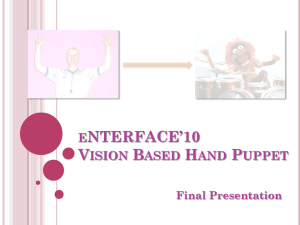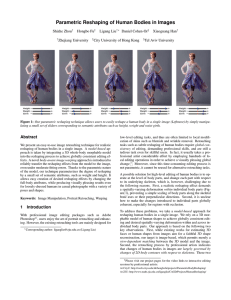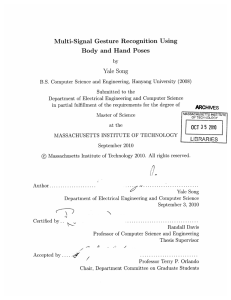Introduction
advertisement
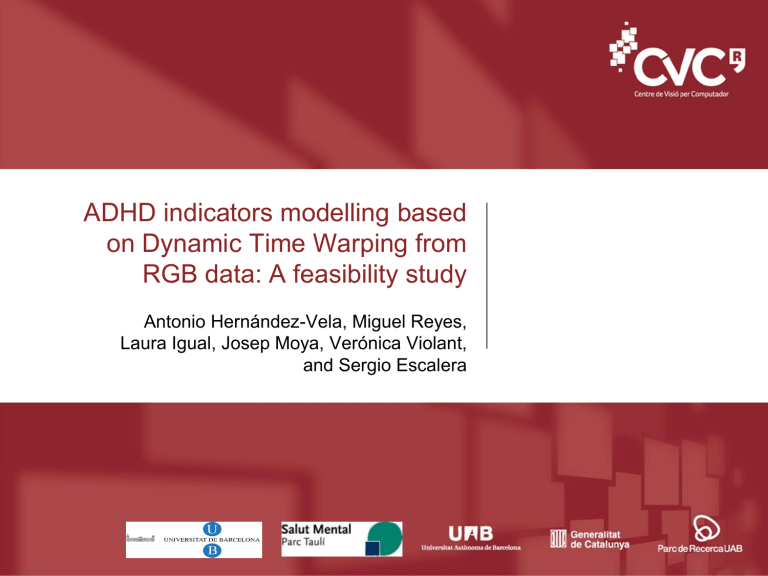
ADHD indicators modelling based on Dynamic Time Warping from RGB data: A feasibility study Antonio Hernández-Vela, Miguel Reyes, Laura Igual, Josep Moya, Verónica Violant, and Sergio Escalera ADHD: Attention deficit hyperactivity disorder Inattention 2 Hyperactivity Impulsivity Outline 1. 2. 3. 4. 3 Introduction Methodology Results Conclusion Introduction • Video-based behavior analysis for ADHD diagnosis in children between 8-11 years. • Automatic detection of ADHD visual indicators 4 Introduction • Behavior analysis Human pose information along time Inattention Head Body Hands time Hyperactivity Gestures Impulsivity 2. Feature extraction: Human Pose Data acquisition 3.1.Gesture detection 5 Outline 1. Introduction 2. Methodology 1. Data acquisition 2. Feature extraction 3. Gesture detection 3. Results 4. Conclusion 6 Data aqcuisition Microsoft’s Kinect RGB + Depth • Invariant to color, texture and lighting conditions • Human pose directly obtained 7 Feature extraction: Human Pose RGB + Depth Body skeleton • 42-dimensional vector: 14 joints × 3 spatial dimensions 8 Gesture detection • Dynamic Time Warping (DTW) 9 Threshold computing Different samples G1 G2 G11 G21 G12 G22 … … G13 G23 … Gn Gn1 Gn2 Gn3 • Leave-one-out similarity measure between different Different gestures samples and gestures 10 Outline 1. 2. 3. 4. 11 Introduction Methodology Results Conclusion Results 12 Results 13 Outline 1. 2. 3. 4. 14 Introduction Methodology Results Conclusion Outline 1. 2. 3. 4. 15 Introduction Methodology Results Conclusion Conclusion • Methodology for gesture segmentation and recognition at the same time. • First results indicate the objectives are feasible. Future work: • Automatic callibration • Feature weighting (body joints) 16 Thank You! ADHD indicators modelling based on Dynamic Time Warping from RGB data: A feasibility study Antonio Hernández-Vela, Miguel Reyes, Laura Igual, Josep Moya, Verónica Violant, and Sergio Escalera Questions?

